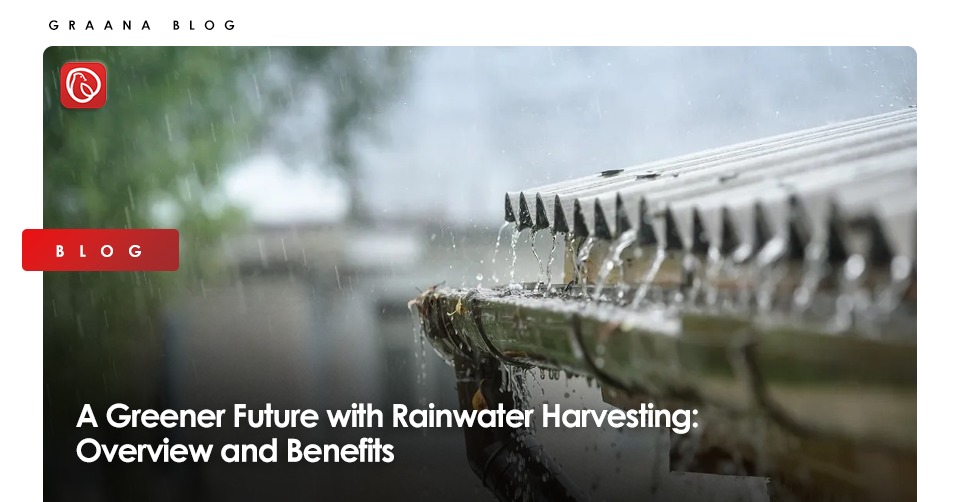For a long time now, the bells of warning have been telling us that water is a precious gem that is becoming harder to find. With each passing day, the population is multiplying, and Mother Nature is being asked to carry an ever-growing burden of supplying for her occupants. Experts are exploring rainwater harvesting as an effective means to curb the excessive use of water and fulfil the everyday water requirements that have become a Herculean task.
Rainwater harvesting can solve all these problems. It can provide a self-sufficient system with immense benefits concerning the environment and economy. It is clean, green and efficient.
Graana.com brings you an overview of the rainwater harvesting system and outlines the benefits it provides for people utilising the system.
What is the Rainwater Harvesting System?
A rainwater harvesting system is a system that allows the collection of rainwater off of a surface for later use. The process is known by several names including rainwater harvesting, rainwater collection and rainwater catchment.
A rainwater harvesting system comprises several steps. The first step is called catchment. Catchment refers to the process of collecting rainwater from a surface. The catchment is usually a roof or any other surface.
The second step is the installation of a coarse mesh that prevents the passage of debris with the rainwater.
The third step involves the use of gutters. Gutters are basically channels mostly attached to the surface to allow the transport of water to a storage facility. The gutters are usually semi-circular or rectangular.
The fourth step involves using pipelines or conduits to transport water from the catchment to the harvesting system. In the harvesting system, the water goes through a series of filtering processes to be purified.
Lastly, the filtered water is taken to a storage tank where the water is stored for later use.

Benefits of Rainwater Harvesting
The collection of rainwater has a myriad of benefits but the chief benefit is derived from its sustainability aspect. It is a process that is termed environmentally friendly, socially acceptable and self-sufficient.
It is also a practice that can practically be implemented by anyone – be it a simple system at home or an elaborate harvesting system with several components. This system is for all.
One of the biggest benefits of collecting rainwater is that it’s absolutely free. You will not be paying the authority for the water supply.
In addition, it can help inculcate the virtues of sustainable living in everyday life and will create awareness among the members of the household about the imminent water scarcity.
Moreover, it has certain environmental benefits too. By harvesting rainwater, the chances of the stormwater running off from the property are reduced because it gets stored.
Consequently, if the flooding of stormwater is reduced, it also reduces the contamination by toxic materials like pesticides, fertilizers and metals etc. Lastly, it further reduces erosion that comes with flooding.
Uses of Rainwater Harvesting
While it is an open secret that there are plenty of benefits to collecting rainwater, it is also important to note that it is equally effective in fulfilling daily water needs. It can act as a stable water source to revert to. The water collected can be filtered and used for drinking and cooking.
Moreover, rainwater can be used to conduct day-to-day household chores like cleaning and laundry. If you still feel that the water is not pure enough, you can use rainwater to water your plants.
In fact, rainwater is beneficial for crops and gardens because, during rain, the elements in the air are joined with the water molecules. Therefore, rainwater is rich in nutrients that provide the requisite material for growth.




